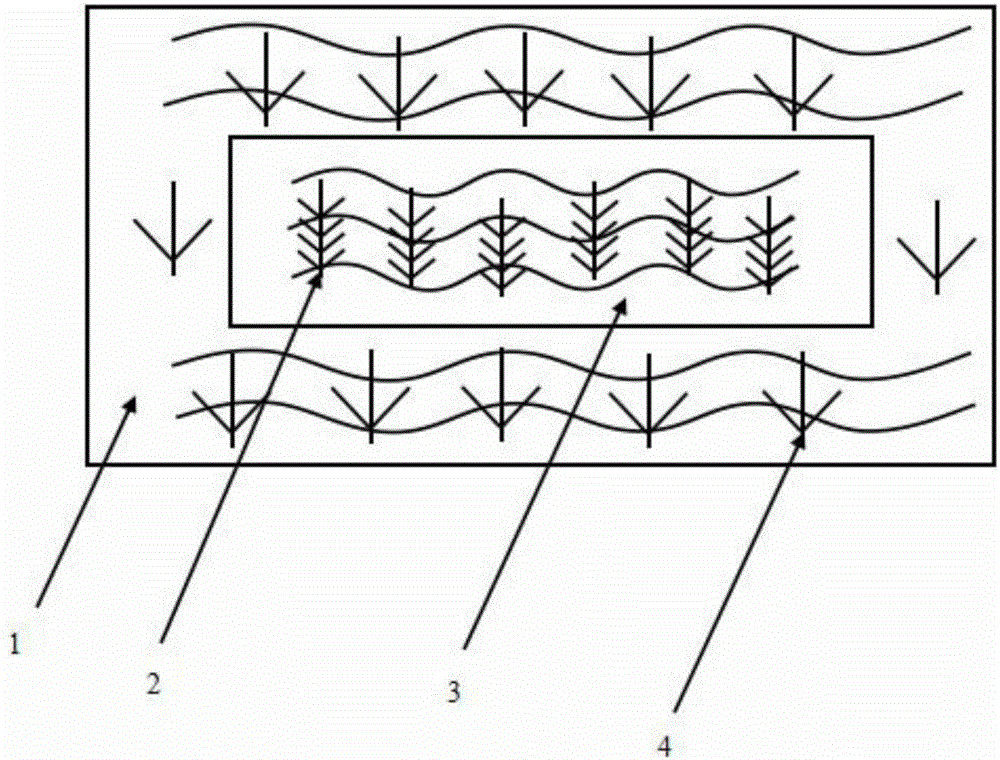Method for regulating and controlling water plants of crab culture pond
A technology for ponds and aquatic plants, applied in chemical instruments and methods, botanical equipment and methods, fish farming, etc., can solve the problems of time-consuming, labor-intensive, difficult to control the number of aquatic plants, and high labor costs, and achieve cost savings, water quality regulation, and improvement. economic effect
- Summary
- Abstract
- Description
- Claims
- Application Information
AI Technical Summary
Problems solved by technology
Method used
Image
Examples
Embodiment
[0054] 1. Crab Pond Construction
[0055] The crab pond should be selected in a place with sufficient water source, no pollution of water quality, less silt at the bottom of the pond, and a relatively secluded location. It requires convenient irrigation and drainage, electricity, and access. The size and shape of the crab pond are advisable with a standardized rectangle, and the area can be from several acres to tens of acres. The present embodiment is 10.14 acres, and the maximum water depth of the pond is 1.8 meters, which is convenient for water quality control. The bottom of the crab pond is flat, the bottom mud is preferably 10-15cm, and the bank has a certain slope, with a slope ratio of 1:3 or more. The key to the construction of the crab pond is the anti-escape facility. The commonly used anti-escape facilities are aluminum skins, which have a smooth and strong surface, and have the characteristics of long service life, convenient installation, and low price.
[0056...
PUM
| Property | Measurement | Unit |
|---|---|---|
| Transparency | aaaaa | aaaaa |
Abstract
Description
Claims
Application Information
 Login to View More
Login to View More - R&D
- Intellectual Property
- Life Sciences
- Materials
- Tech Scout
- Unparalleled Data Quality
- Higher Quality Content
- 60% Fewer Hallucinations
Browse by: Latest US Patents, China's latest patents, Technical Efficacy Thesaurus, Application Domain, Technology Topic, Popular Technical Reports.
© 2025 PatSnap. All rights reserved.Legal|Privacy policy|Modern Slavery Act Transparency Statement|Sitemap|About US| Contact US: help@patsnap.com



